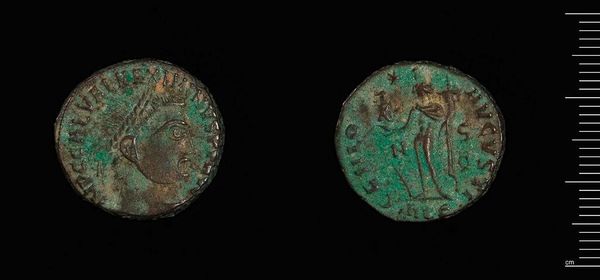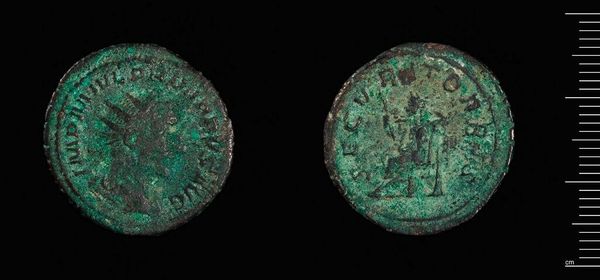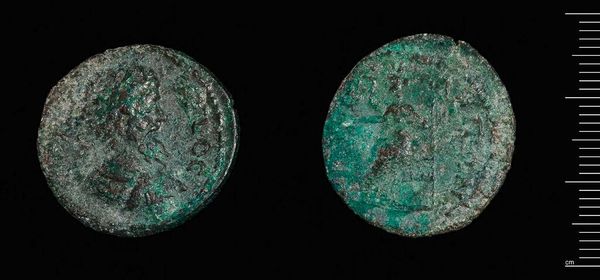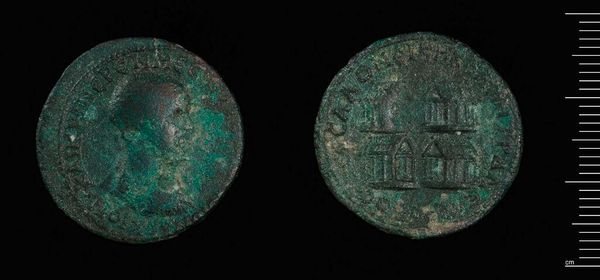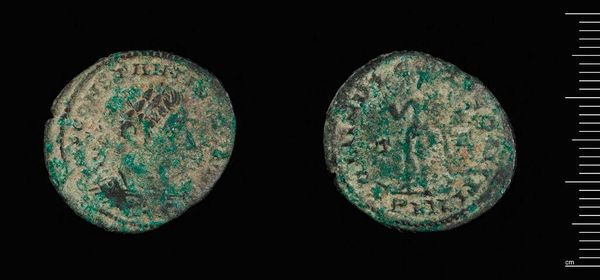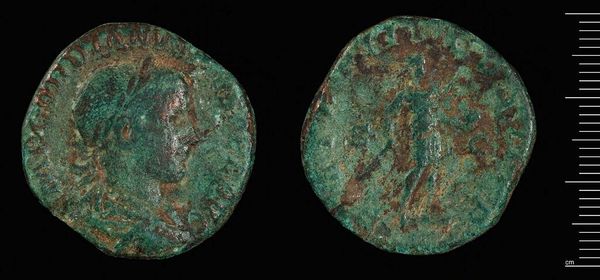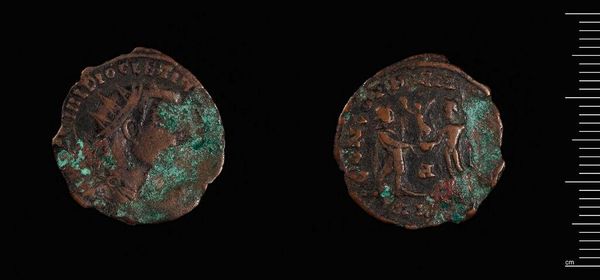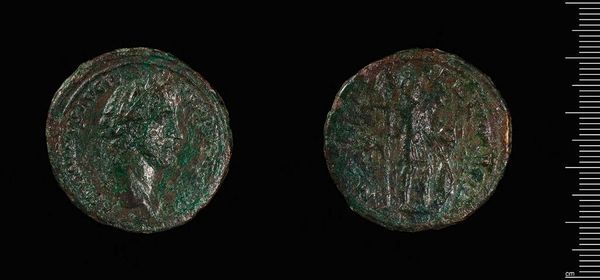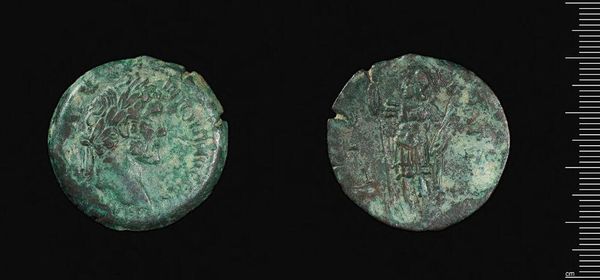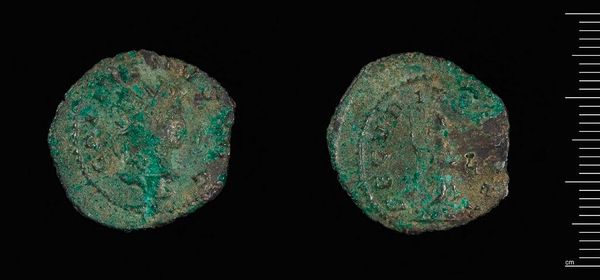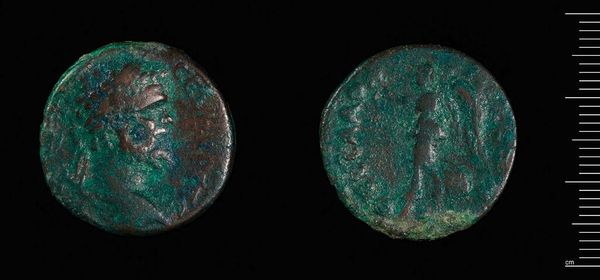
Dimensions: 6.2 g
Copyright: CC0 1.0
Curator: Let's discuss this corroded coin, a Follis of Maxentius, minted in Rome. It's a small bronze piece, weighing just over 6 grams. Editor: Immediately, I'm struck by its texture. The verdigris is so thick that it almost obscures the imagery, creating a sense of time's relentless passage. Curator: Indeed. On one side, we see a portrait of Maxentius, the self-proclaimed Roman Emperor. The other displays a temple facade, likely a representation of Roma, a deity of the Roman state. It was a political tool as much as currency. Editor: The composition is so classical: the emperor’s profile, the iconic temple. The patina, however, radically alters our reading of this object. Curator: Absolutely. The corrosion disrupts its original intended clarity. It serves as an index of degradation, of how time, and possibly neglect, change even symbols of power. Editor: Ultimately, this material transformation forces us to consider the gap between intended meaning and our present understanding. Curator: I find myself appreciating the coin's visual presence now, after understanding its historical weight. Editor: And I see it less as a purely historical artifact and more as a study of decay and change.
Comments
No comments
Be the first to comment and join the conversation on the ultimate creative platform.
